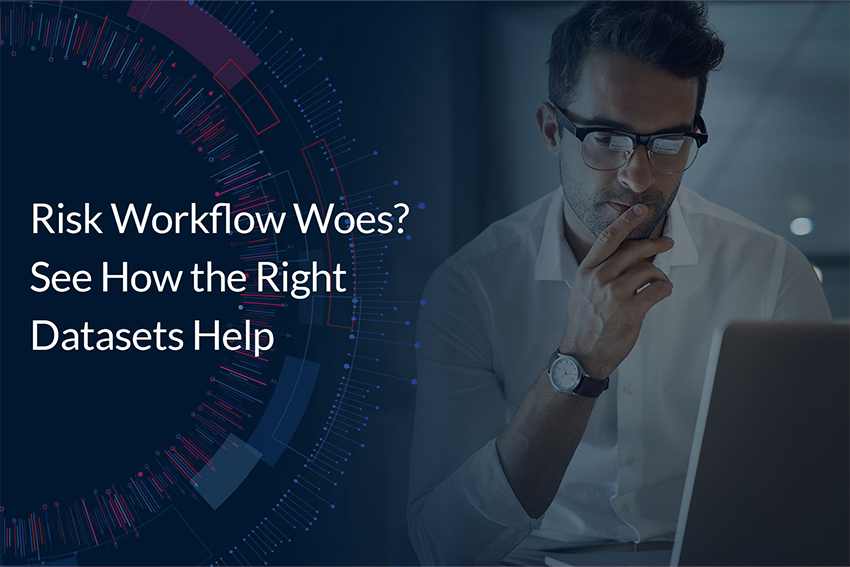Business consultants know that good strategy starts with good data. Whether you’re advising on market entry, growth opportunities, or competitive positioning, clients expect your recommendations to be...
Large Language Models and generative AI tools have transformed the way organisations bring order to the vast amount of online and offline data available. AI can narrow down this data universe to a concise...
Artificial intelligence (AI) offers an incredible amount of opportunity from enhancing productivity to managing information. But, because AI "learns" from the data you give it, it's critical to develop...
Generative Artificial Intelligence (GenAI) stands as a transformative force in the digital landscape, promising innovative solutions and creative approaches to data synthesis. However, GenAI faces its...
In a recent LinkedIn post , data and technology transformation consultant Tommy Tang writes, “Generative AI has emerged as a potent tool across various domains, from content creation to bolstering decision...

Risk management has never been easy. In recent years, however, the challenge has grown exponentially. The good news? Risk management professionals are gaining visibility and influence. According to a McKinsey survey on behalf of the Federation of European Risk Management Associations (FERMA), more than 50% of risk managers said that “The global pandemic has made risk and resilience significantly more important to their organisations.” How can organisations support resilience moving forward? Survey respondents say that better risk data aggregation, reporting, and prediction will be critical to their success.
3 Kinds of Big Data that Empower Risk Management
Use of internal data for risk management is a widespread practice, such as analysing transaction data to identify signs of fraud, money laundering or terrorist financing. But complementing internal data with outside sources is critical when it comes to comprehensive risk management.
- Sanctions, Watchlists & PEPs—In times of geopolitical turmoil, the number of sanctions and politically exposed person can grow at a feverish pace. The response to the invasion of Ukraine, for example, has spawned thousands of sanctions and politically exposed person designations. Aggregated sanctions, watchlists & PEPs data, delivered via flexible API, can be used for on-going monitoring for sanctions risk within critical business relationships—from a potential acquisition or merger to suppliers anywhere in the supply chain.
- Adverse Media—The power of 24/7 media cannot be denied. We’ve all seen stock prices plummet or skyrocket based on a viral tweet. Corporate reputations aren’t immune either.
In fact, “reputational resilience” was a key priority for the risk management professionals surveyed for the FERMA study noted earlier. As such, reputation isn’t just a public relations concern; increasingly, it has become a risk management function too. Adverse media feeds can integrate negative news mentions into due diligence and risk monitoring workflows, bringing near real-time visibility to red flags so organisations can respond faster. - ESG Data—Data related to Environmental, Social and Governance (ESG) issues is essential—both in terms of reputational AND regulatory risk. The FERMA study notes that “A wide range of stakeholders—employees, customers, regulators, investors, and society at large—are holding firms accountable for their actions, brand promise, and stance on environmental, social, and governance (ESG) issues.” This attention to ESG means organisations need to do more than talk about their commitments; they need to prove it. Integrating ESG data into the risk management workflow allows organisations to spot potential ESG issues and address them quickly to mitigate reputational damage from association with a vendor named for poor environmental or social performance. It also shows good governance efforts and establishes a process necessary as more countries adopt regulations requiring ESG due diligence on their supply chains.
In an interview, IBM director of enterprise risk management Stuart Horn, said, “Using data, being able to leverage it, aggregate it, make sense of it and then apply it in a smart way so you get what is actually pertinent to you, is really what’s at the core of using big data for risk management. The companies that are leveraging big data, analytics and artificial intelligence are the ones that are better at managing risks and getting better performance.”
3 Features to Look for in a Data as a Service (DaaS) Provider
All data sources are not equal. The sheer volume of data can be overwhelming to sift through, and that’s after you’ve gone to multiple sources to gather relevant datasets. On top of that, big data can be more challenging to ingest and use because of disparate formats. Choosing the right DaaS provider is crucial for success. What should you look for?
- Source and data type variety—Look for a DaaS provider who offers a wide range of sources and data types. LexisNexis, for example, aggregates data from sources around the world. Data types span print, broadcast, and web news; company and financial information including beneficial ownership data ; ESG data, legal and regulatory data, and patents.
- Deep archives—In addition to current data, access to a huge archive of news, company and legal data supplies real benefits. LexisNexis has been aggregating data for more than 40 years. This enables organisations to take advantage of historical data for identifying positive or negative trends and fuelling predictive analytics to support proactive decision making.
- Enrichments—The problem with big data is the BIG. With such a large volume of information to contend with, narrowing down to what matters can prove challenge. Recognising this, LexisNexis adds index terms and other metadata to all the data we aggregate. Delivered in a semi-structured format, our enriched data requires less wrangling and supports powerful filtering to refine results and surface valuable insights.
Check out our white paper on data for risk management for examples of how big data is helping organisations protect and grow their business.
Ready to get started? Connect with us for further information’ Portal.